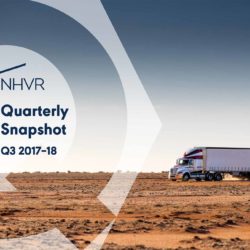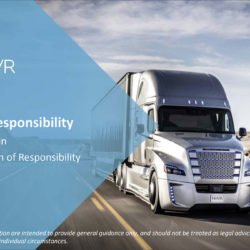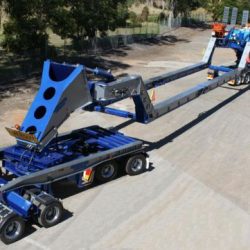Heavy Vehicle reform has seen many new developments in recent months. Areas such as safety management and driver fatigue have received particular attention with amendments to the Heavy Vehicle National Law. There’s been increased focus on productivity and performance across the entire industry with new technology and regulations meaning new possibilities for operators and owners.
In this two-part feature, we will look at the recent developments outlined by the National Heavy Vehicle Regulator (NHVR) in these areas and more.
Safety and compliance
March 2018 saw the first meeting of the Safety Industry Operator’s Group. Convened by the NHVR, this group focuses on new safety initiatives for the industry to complement other groups who concern themselves with heavy vehicles as they relate to agriculture, livestock and rural transport, oversize / over-mass deliveries and cranes.
At the top of the Safety IOG’s agenda were the review and further development of a set of tools for heavy vehicle operators to objectively review and manage their safety obligations. This Safety Management System (SMS) Guidance Initiative takes the form of printed and online guidance materials, new regulations and an online safety checklist for the workplace. Together, they promote a positive outlook to safety across road, maritime, rain, aviation and any other industry where heavy vehicles are commonplace. Members of the Group include representatives from industry heavyweights such as Coles, NatRoads, the SA Road Transport Association and of course the NHVR itself.
Driver fatigue was also the subject of much attention, with the group considering 60 submissions taken over the course of a month-long consultation period. This resulted in a new exemption to the regulations to account for personal use of heavy vehicles. From February 1, 2018, it is now permissible for operators who have standard hours to use the heavy vehicles for up to one hour outside their usual driving hours. A similar scheme already exists in NSW and will now expand to cover drivers in Queensland, Tasmania, Victoria, South Australia and the ACT.
With the many different shapes and carrying capacities of buses around the country, there was some confusion over which models would be eligible for coverage under Australia’s Heavy Vehicle National Law (NHVL). Hence, an easy to understand Variation of Buses chart was designed so that operators could quickly asses their vehicle’s access requirements across the different states that the NHVL applies. It also quickly illustrates common examples of General Access and Class 2 / 3 notices that are outlined in the Law.
Australia’s forestry industry plays host to a wide assortment of heavy vehicles for the transport of equipment and harvested trees. Working with the Commonwealth Government, the NHVR started Heavy Vehicle Safety Initiative workshops aimed at the forestry supply chain. These were hosted by the Australian Forestry Contractors Association (AFCA) and were designed to introduce new safety material to contract workers in the industry. This included safety advice for deal with truck rollovers, load restraint risks and ensuring everyone in the supply chain was aware of their Chain of Responsibility obligations.
In part two of this feature, we will examine new developments in the areas of Productivity and Performance. In the meantime, contact The Drake Group to see how we support safety in all our range of trailers that we design and manufacturer locally.



